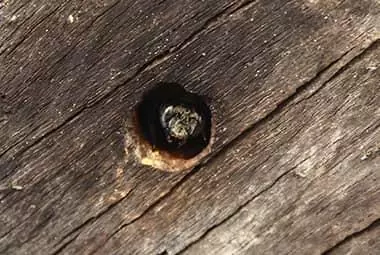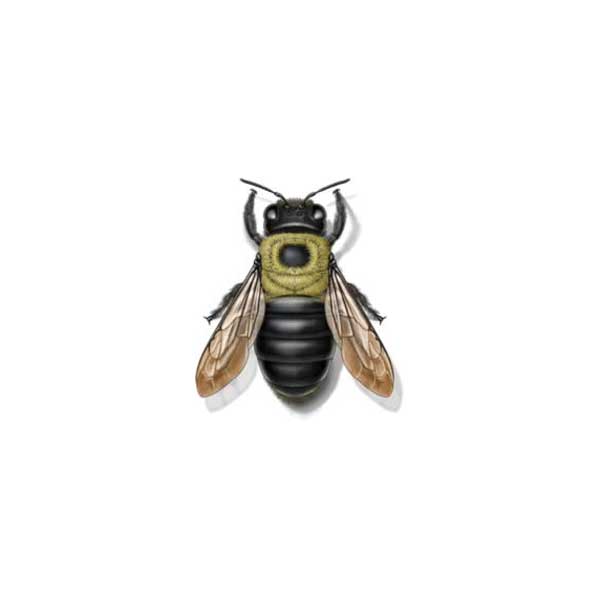When we think of bees, or just insects in general, it’s no surprise that we think about the warmer spring and summer weather. That’s because most insects don’t survive through the fall and winter months. Bees, in particular, will gather within their hives to hibernate while they wait for spring to turn up again. Carpenter bees shouldn’t be any different, right? Well, while these problematic pests are similar to other insects in the fact that they prefer to avoid the winter weather, the fact is, here in Tennessee, our weather tends to stay warm well into early fall. This means that these fuzzy black bees will continue to do their work until the temperature actually starts dropping.
Carpenter bees look similar to their bumblebee cousins, who never really bother anybody. Often, this means that homeowners don’t realize they have a problem until the damage becomes extensive. You may see what looks like a bumblebee buzzing around the exterior of your home and don’t really think much of it because a bumblebee will do no damage to your home. Unfortunately, carpenter bees cause a lot of damage, especially if they choose to build their nests in the structure of your home.
Of course, one carpenter bee won’t cause much of a problem. It’s when carpenter bees continue to come back and lengthen those tunnels that they start becoming an issue. Additionally, carpenter bees will visit year after year to nest, continuing to drill deeper into the soft wood of your home to create structural damage within. Warping, bending, and breaking of wooden structures is not uncommon for homes where carpenter bees have invaded. Wooden staircases, railings, and roofing are all in danger of being bored into and damaged. Carpenter bee larvae even draw woodpeckers to your home, which can create even more damage if left unchecked.
There are several ways to help prevent carpenter bees from deciding your home is a good nesting site, ranging from eliminating moisture to closing holes you find in the exterior of your home with a professional grade wood filler. However, if you’re already experiencing problems with carpenter bees, professional pest control is always the safest and quickest way to rid your home of these insects. DIY methods of removal can often result in failed efforts and wasted money, but at Russell’s Pest Control, we promise to protect your home and eliminate carpenter bees living inside. Our pest control experts will come to your home, identify any pest problems you have, and provide you with a plan to keep your home and family safe from damage and harm. Contact Russell’s Pest Control today to request your free estimate.

